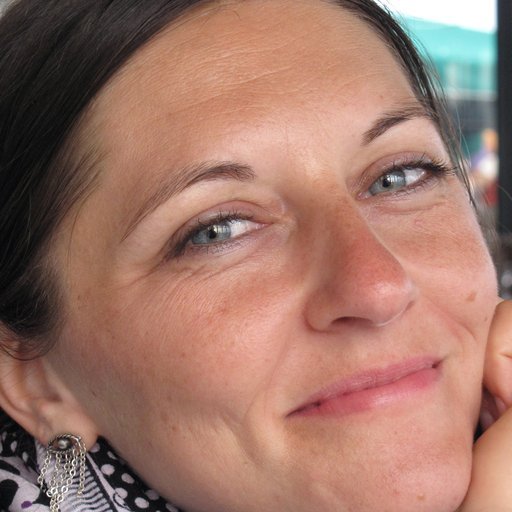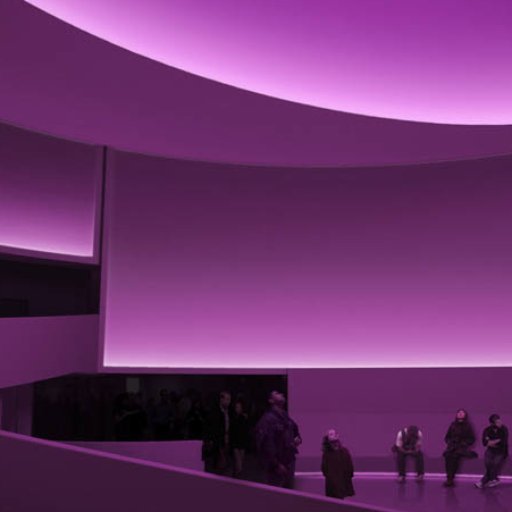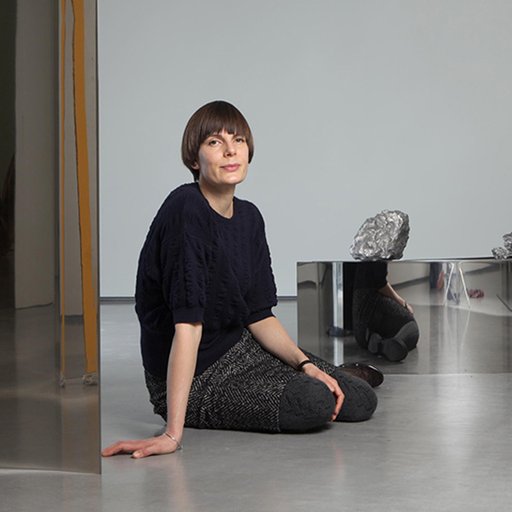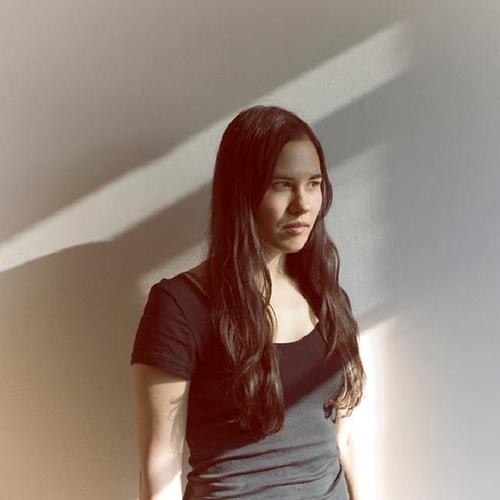The German-Egyptian artist Susan Hefunahas seized the attention of the international art world with her drawings of grids, delicate compositions that seem to recall the formal experiments of the Minimalists but gradually reveal themselves to be filled with riveting content—in particular, a commentary on the position of women in Middle Eastern culture. In her work, Hefuna's recurring touchstone is the Mashrabiya, the traditional latticework found on the windows of Egyptian buildings that has become associated with harems in the West as a result of their frequent use in 19th-century Orientalist paintings. The form—evoking a difference of station between men and women, and an outside/inside view of Arabic mores—is a loaded one indeed.
Hefuna is also interested in connections—in space and time, but most importantly, in a world where technology and politics have dramatically reinforced national borders. Hefuna (who is of multicultural origins herself, having been born in Egypt and raised and educated in Germany) proposes the idea that everyone is interwoven together, sometimes in ways that are hard to realize; her work, which encompass a broad range of media including sculpture and video, is rarely interested in referring to one culture in isolation.
This month, Hefuna will debut a new dance performance—titled NOTATIONOTATIONS—from September 16-18 at The Drawing Center, done in collaboration with choreographer Luca Veggetti and performed live. To mark this occasion, we spoke with Hefuna about her meditative drawing process, her photography's ongoing dialogue with Orientalism, and why something as small as a strand of DNA can inform her worldview.
As a half-Egyptian, half-German artist, you were raised with one foot in either culture. How do your drawings relate to your views on nationality?
I would generally describe myself as "one"—I do not feel any boundaries within me of being a "half-and-half" artist. Also, I have travelled to so many places, from nearly every state in the U.S., to India, Africa, most of Europe, the Emirates, and Japan. My drawings are very closely related to my life, so my travels certainly influence my work. I have made and continue to make most of my drawings in New York, although I completed some series in Japan and some in Istanbul. I rarely did any drawing in Germany or Egypt, though. As for the relationship between drawing and nationality, a drawing has no nationality, and has no time and space. It is its own universe.
You’re known for your drawings that resemble mashrabiyas. What makes this architectural element—and architecture in general—such a compelling point of reference for you?
I am always attracted to the abstract form of structures—forms like DNA, molecules, and modules, the details in science that inform the bigger structures of life. I have studied the patterns of mashrabiyas in Cairo since childhood, and they inspired many of my drawings. I then discovered similarities between my drawings and molecular structures, especially in the joins where the lines intersect one another. All my work is inspired by structure.
I have found inspiration in the beauty of architectural structure and the atmosphere of mashrabiyas—that which protects the inside world from the outside world, filtering the light and cooling the inside space, and allowing one to observe without being seen. This has influenced my ink drawings, which have developed into two layers of paper of different thickness and translucency. I draw the lines in one sitting, without interruption or re-inking, holding the line for as far and as long as I am able.
I’m aware that people read my work differently, depending on their own cultural or social context. They only see what they know. In my experience, most human beings are not able to see the world without a screen of social and cultural projections. The mashrabiya became a symbol that operates in two directions with the possibility for dialogue and awareness.
Your artworks seem to draw much more heavily on Egyptian styles than Western ones—which is somewhat surprising considering the fact you studied art in Frankfurt. What is it that attracts you so much to the imagery of Egypt?
I am not sure how you define “Western style,” or what “Egyptian styles” look like, as it seems to me that the world today is global. I first studied art in Germany in 1982. After my studies, my work was more inspired by life than serving any specific style or national art scene. However, my work is certainly inspired by different cultural codes, as I divide my time between Germany, New York, and Egypt.
In an interview with the curator Hans-Ulrich Obrist, you described your process for making these drawings as “meditative.” Can you describe your process?
I need time to prepare before doing a drawing. The active time of “not doing” is as important as the activity of actually “doing” the drawing, especially for my ink drawings on layers of tracing paper. With these, my method is to start with one dot and from there connect more dots and lines. When I start, I do not have an image in my mind, and I do not make a sketch beforehand. The drawing unfolds in front of me. I don't correct or redo it. This method needs a high level of concentration.
This September, you will draw in chalk as part of NOTATIONOTATIONS, a performance with choreographer Luca Veggetti at The Drawing Center. For the performance, Veggetti will choreograph dancers that will dance in repetitive motions so as to erase the drawings. What themes or ideas are you addressing in this piece?
In September, we will have live performances at The Drawing Center and each evening performance will be different, because it relates to my new drawings. I'm really looking forward to the live events. In addition, The Drawing Center will exhibit my drawings on tracing paper and a video, NYC Crossroads, which shows the movement of people in New York City on another level—the cross-section of streets in Manhattan. You can observe the movement as well as a kind of choreography or "notation." People are connected, even if they are not aware of it.
You’ve said, “All the work I do is from the point of view of a woman,” and much of your photography involves Egyptian women. Why are women often a focal point in your work?
It's natural! I was born a woman and therefore I work from the point-of-view of a woman. Even if most of my works are very abstract, I have no other choice.
The photographs of Egyptian women behind mashrabiya are grainy and appear to have been taken decades ago, even though they all date from recent years. What inspired to you to give the impression of reaching back into history in these works?
The series you refer is a photographic series called Cityscape Egypt, which I made between 1997 and 2001. These photographs of familiar daily scenes in Cairo and the Nile Delta were inspired by the Orientalist images of the Swiss-German photographers Lehnert and Landrock. Their shop, which still exists in downtown Cairo, is filled with their Orientalist black-and-white photographs of exotic women and Pharaonic scenes, which they took in the '20s for a Western audience. I wanted to deconstruct these posed images of women and scenes of Egypt because Lehnert and Landrock only show clichés—they don't show real life. So I actually developed the films of my photographs in the streets, and I included the dirt and dust of the streets so the photographs became like windows with different layers. The viewer has to look very carefully at the images to discover that they show contemporary life, and not the past. I played with the black-and-white aesthetic, with time, with clichés, and with different cultural readings of the photographic images in order to deconstruct them.
What are you working on now?
I am currently in Japan, working on new drawings. I'm also preparing a solo show for the Sharjah Art Foundation in March 2014, and I'm developing new sculptural works. I work all the time.
You frequently cite Om Kolthoum, the famed Egyptian singer, as one of your greatest inspirations. Which visual artists have inspired you the most?
I remember sitting in a café in Cairo as a young girl, listening to a famous song on the radio by Om Kolthoum, “Enta Omri” (“You Are My Life”). She impressed me because she was a very strong and powerful woman. She would sing one song for several hours—it was very abstract and performative. All the lyrics were so poetic that I used some phrases from her songs in my wooden mashrabiyas and my textiles.
When I started to study art, I became inspired by many artists, including Joseph Beuys, Eva Hesse, Louise Bourgeois, James Lee Byars, Méret Oppenheim, Rebecca Horn, Paul Klee, Joseph Cornell, Art Brut, Agnes Martin, Mark Rothko, Leonardo da Vinci, and Caravaggio. These are just a few of the artists I have interested me over the years, though my inspirations always depends on what I am currently working on and which aspect of an artist interests me at a certain point in my life.
What was your first artistic experience?
It was all very natural. I started drawing as a child, and that was when I began to express myself beyond words and in a language of my own. I did not think about “art” or “artistic experience” or the “art world” or even an audience then. I just did what I wanted to do, looking for ways to express things more specifically than with words. I did it without a hidden agenda.
What made you want to become an artist?
I never decided to become an artist. It was the only way to go. I did not choose it as a profession—I have to do what I do, there is no Plan B.
Is there anything you collect yourself?
When I travel all over the world, I collect unique handmade things that have an aura, objects that would not be shown in galleries but that are still high-quality works. I also collect work by young Egyptian artists, and I have a collection of artworks that I exchanged with other artists.
RELATED LINKS:
Q&A: Drawing Center Director Brett Littman on Susan Hefuna's "Brilliant" Art
























